Ipsa childreni (Gray, 1825)
Children’s
cowry, 14-25mm
Ipsa childreni is unusual
in that it is the only cowry with ridges that extend across the entire shell.
All cowries have ridges (called "teeth") that line the aperture of
the shell, and in some species these teeth extend across the entire base of
the shell. But only in this one do the teeth extend all the way around. This
species is not particularly uncommon in the Marshalls, but to see living animals,
you have to go out at night. Dead empty shells collect in the surge channels
on the leeward seaward reef of Kwajalein Atoll. Sometimes fresh, still shiny
shells are found on the floors of honeycombed ledges and caves along surge channel
edges. It should have been obvious that they had been living up in those honeycombs,
but only after divers started examining those ledges at night did the first
live ones show up. Even at night, the shells are generally well inside the ledges
and caves. While they can be found throughout the surge channel, they seem to
prefer the lower caves and ledges near the floor of the channels, usually at
depth ranging from about 10-22m. Rarely, the species can also be found at night
on the slopes of lagoon pinnacles. They are quite sensitive to light, so at
the approach of a diver's bright flashlight, they tend to start moving back
into the darker recesses of the caves. The species is distributed through much
of the Indo-Pacific with the exception of the western Indian Ocean and Australia.
The species was named for John George Children, an 18th and 19th century British
conchologist.
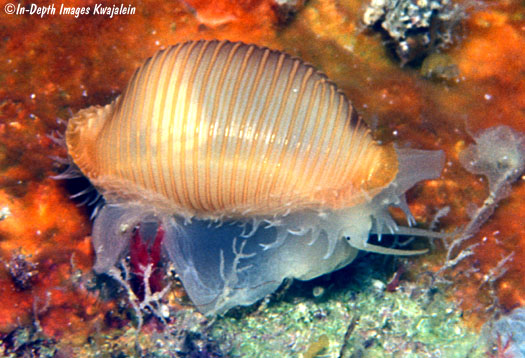
Like
Annepona mariae, Ipsa
childreni can have the whitish granules embedded in the sides of its mostly
translucent foot.
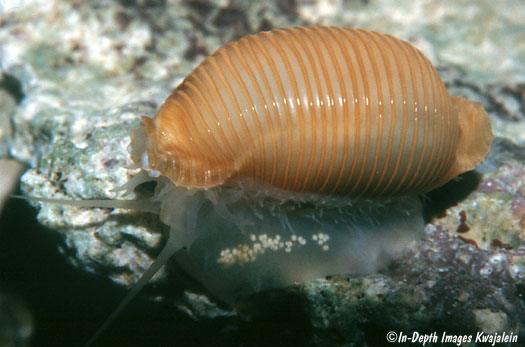
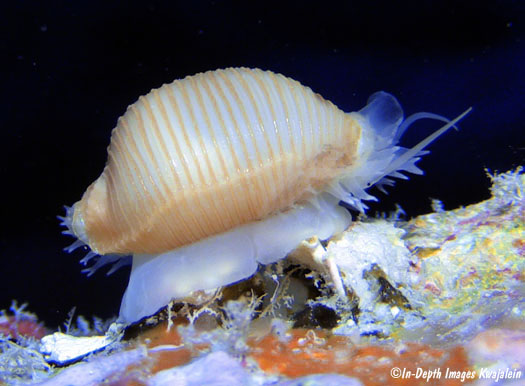
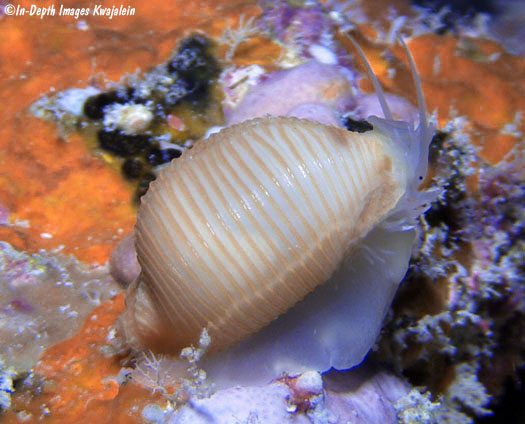
The specimen below has its nearly
transparent mantle covered with simple spiked papillae partially extended around
the posterior end, while the following shot shows two animals with their mantles
completely extended.
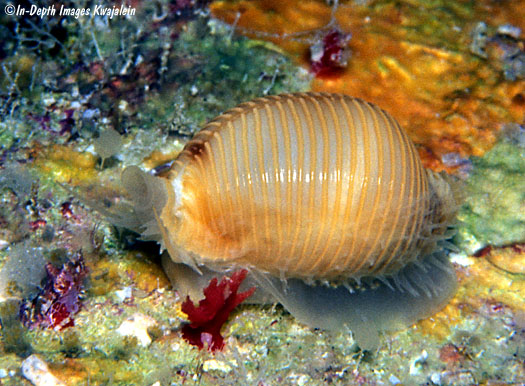
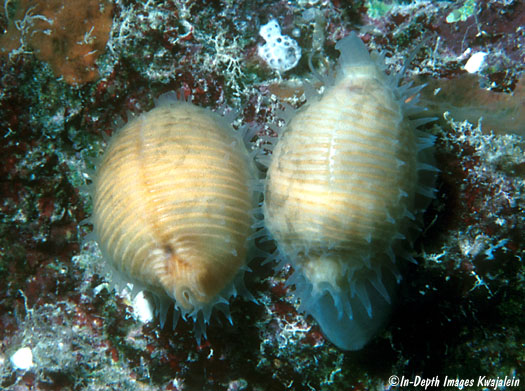
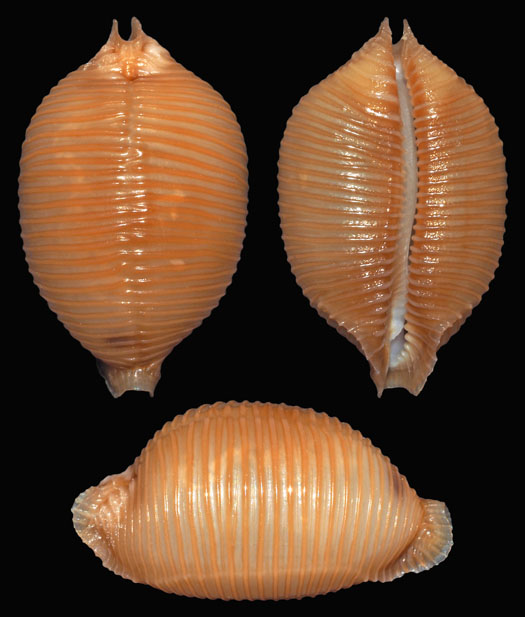
23.45mm, 28 March 1992
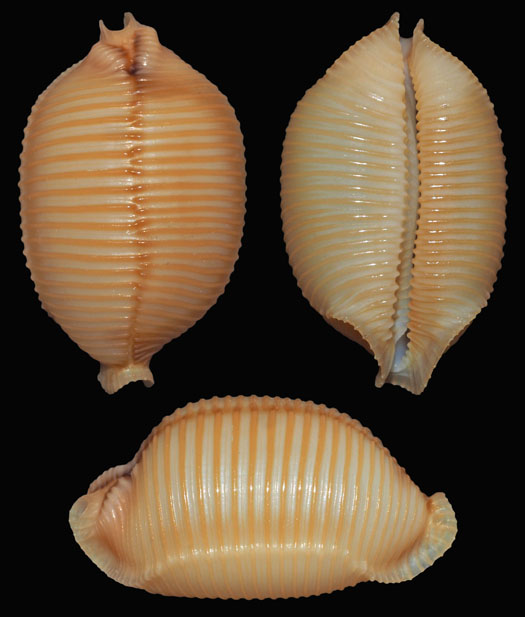
Juvenile shell that has not put
on its lateral and dorsal ridges. 20.3mm, 5 August 1988
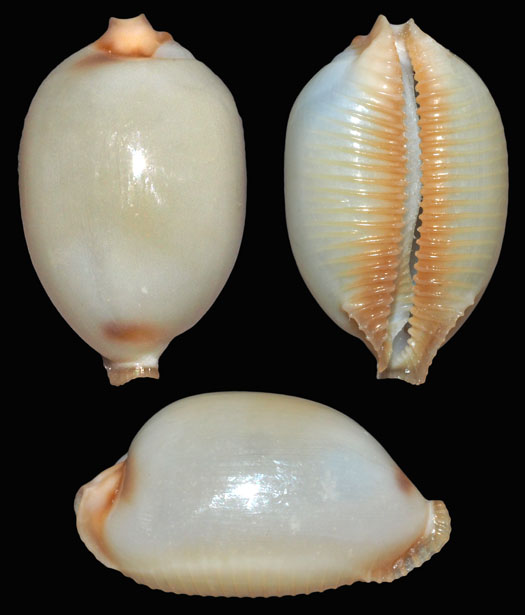
Updated
1 April 2008
Updated 23 February 2020
Back to
cowries
Kwajalein Underwater Home









